Gun making history abounds with important patents and groundbreaking features but here is the gun which convinced the British public that breechloaders were commercially viable.
It came to light a few years ago,while preparing Atkin, Grant and Lang for the Midland Game Fair in September. I asked what we had that was 'almost ready' and while gunroom manager, Carl, poked around in the safe, showing me various guns in varying states of readiness, I noted a grubby old hammer gun pass through his hands; "Stop! What's that?"
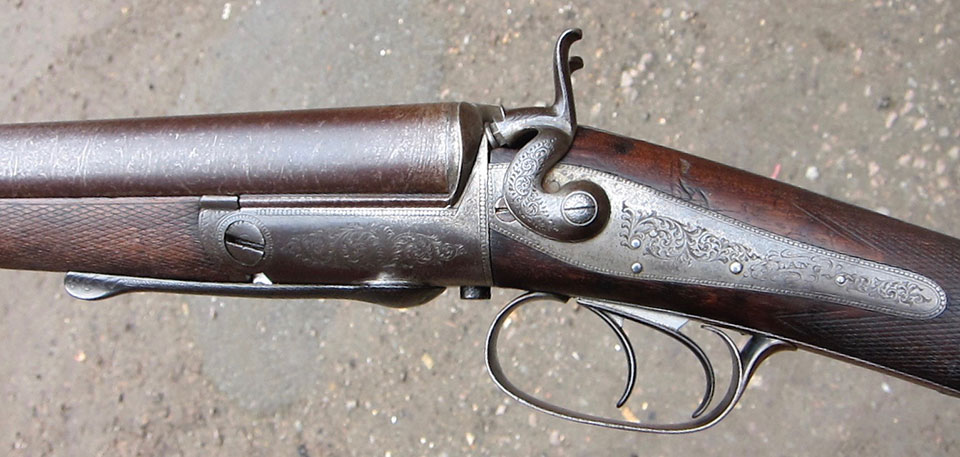
Held in mid air was a very early looking pin-fire conversion; I could see immediately that it was originally a pin-fire from the thin fences; a quick inspection of the barrels confirmed it - there were the dovetailed pin holes on the tops. Unlike a lot of conversions, this one had been fitted with very nicely shaped and engraved hammers.
It is not the only pin-fire conversion I had seen lately, I am in the process of cleaning up a very nice John Blanch & Sons 12-bore, but this was interesting for a number of other reasons. It was one of the very early breech-loaders by an early champion who introduced a secure and convenient system to the British shooting public Joseph Lang. It also turned out to have been made for a winner of the Victoria Cross.
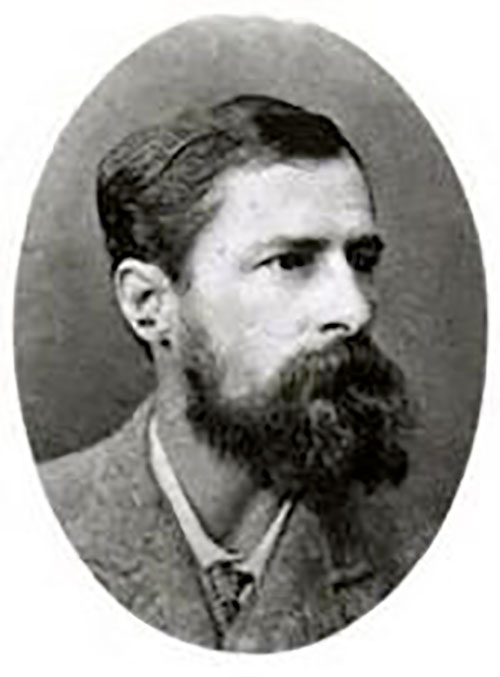
Specifications:
Maker: J. Lang
Serial Number: 2729
Type: Back-action hammer gun
Operation: Forward facing under-lever
Gauge:12-bore
Locks: Non-rebounding
Stock: 14 3/8" straight hand with horn butt plate.
Made: 15th October 1863
Made for: Captain Dundas (to match gun 2685)
Barrels: 30" damascus, game rib.
Forend: Splinter with wedge & escutcheon
Chambers: 2 1/2" BP proof
Weight: 6lb 12oz
Joseph Lang is the oldest of the gun makers now flying under the Atkin, Grant & Lang banner. He established his business in 1821, mostly selling guns given to him by James Purdey on a sale or return basis, from his Haymarket premises. Purdey not only sent him guns, he was the provider of Lang's wife; Purdey's daughter Eliza, who evidently was not returned, but married in 1828.
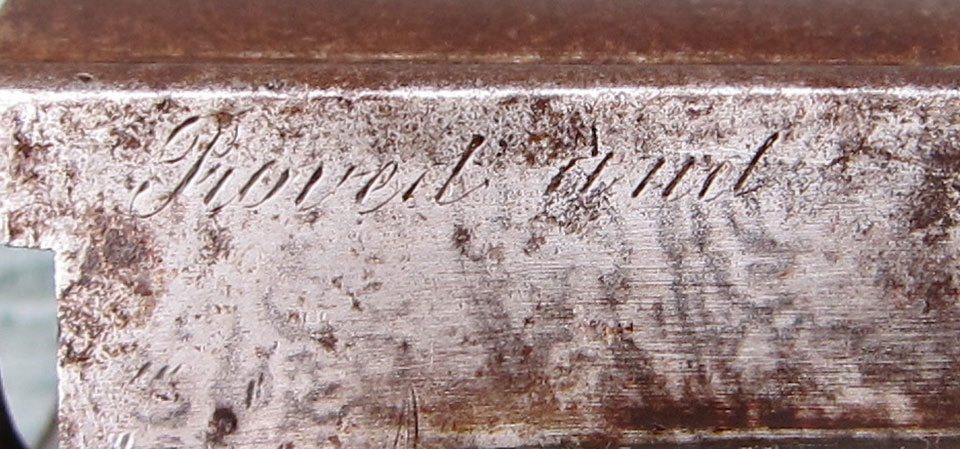
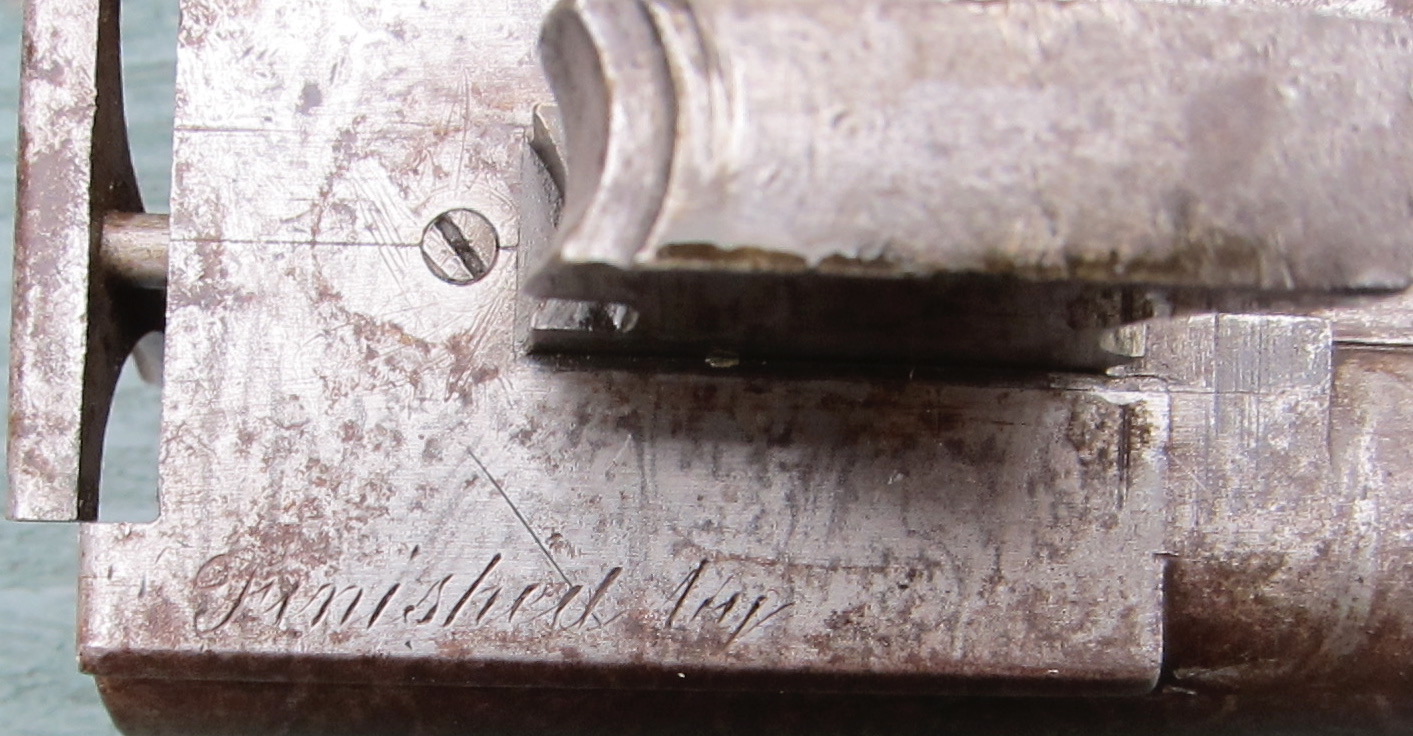
Lang's sons were taken into the business, one apprenticing under James Purdey the younger. This continuity ensured the longevity of the firm. However, Lang senior was not just a retailer of other men's guns.
In 1851 a Great Exhibition was held in London to showcase the inventive and industrial achievements of the Victorians. It was organised by Prince Albert, and brought all kinds of clever devices to public attention. Among these was the breech-loading pin-fire of Casimir Lefaucheaux.
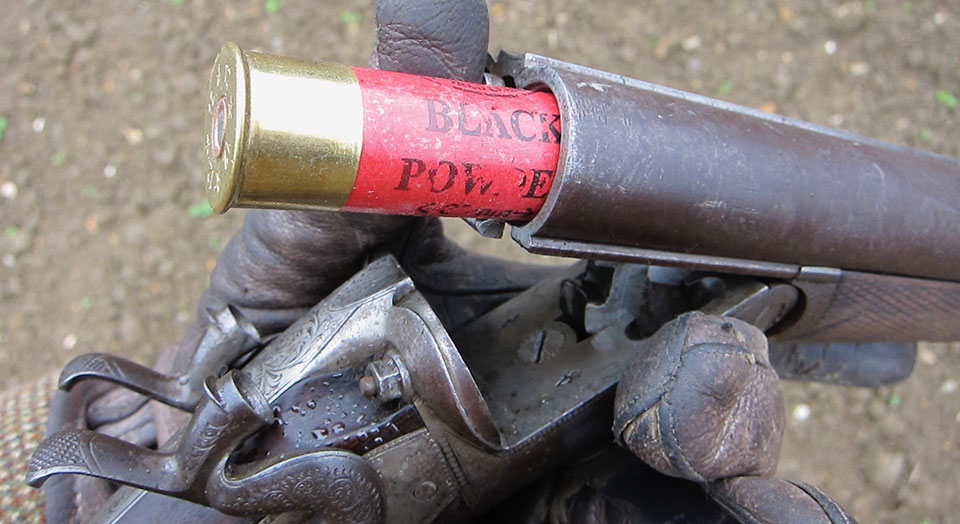
The story goes that Joseph Lang saw the gun at the exhibition and saw the future. He quickly set about making some of the new-fangled devices: 'French crutch guns' as they were often disparagingly called. In 1855 he displayed his creations at the Paris Exhibition. Then, amid plenty of press debate about the strengths and weaknesses of breech-loading guns, The Field hosted a trial in 1858 at Ashburton Park in Chelsea, at which the main objections to breech loaders were disproved.
The Prince of Wales ordered one from Lang in 1863, number 2725, in 15-bore. In 1865 Lang announced to the public, via the Sporting Gazette that he was making breech-loaders, "...on an entirely new principle, the simplest and quickest ever offered to the public. It combines strength and durability."
Lang's production model adopted a LeFaucheaux-like forward facing under-lever but with a rotating bolt locking system. It seems to work; the one I just uncovered is still shootable. The serial number of this 1863 gun is 2729, just four numbers later than the Prince of Wales's 15-bore. It is a 12-bore with forward facing under-lever and back action locks; non-rebounding, of course. It was made for Captain James Dundas, V.C, who was killed during the second Afghan War of 1879-1880, while laying mines under an enemy fort.
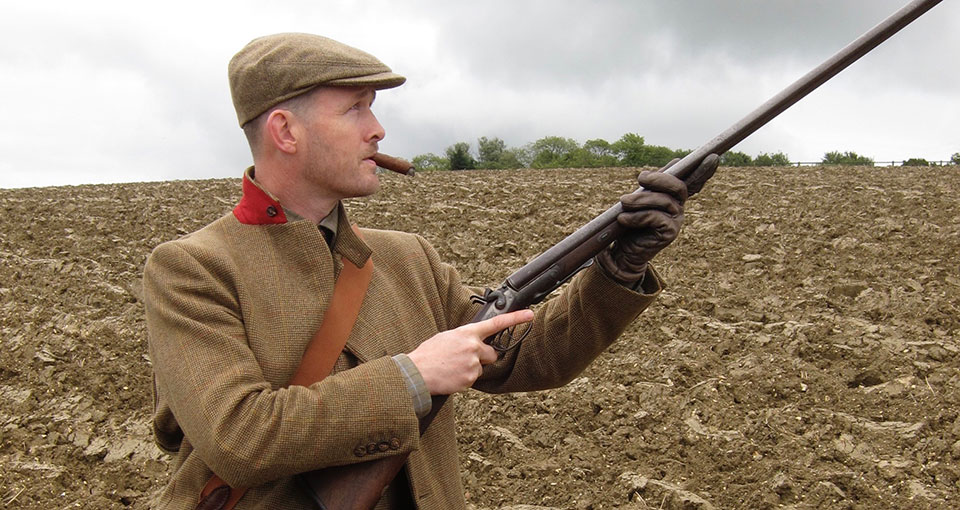
The barrels are best damascus and bores are 13 in the right and 12 in the left. Proof is for black powder and it has never seen the proof house subsequent to its initial testing. The address they bear on the rib is Cockspur Street, where Lang conducted business from 1852 until 1886. With barrel walls showing a minimum of 25 thou, it will safely shoot Gamebore's black powder loads. The thin profile of the action makes nitro proofing a bad idea; besides why not shoot the gun with what it was designed for?
The stock is conventional with straight hand, horn butt-plate and decent figure, showing plenty of strength and with a nice thick wrist. The forend is held in place by a wedge and escutcheon, the locks are crisp and trigger pulls likewise. Having cleaned off all the decades of accumulated filth, I knew this gun was going shooting!
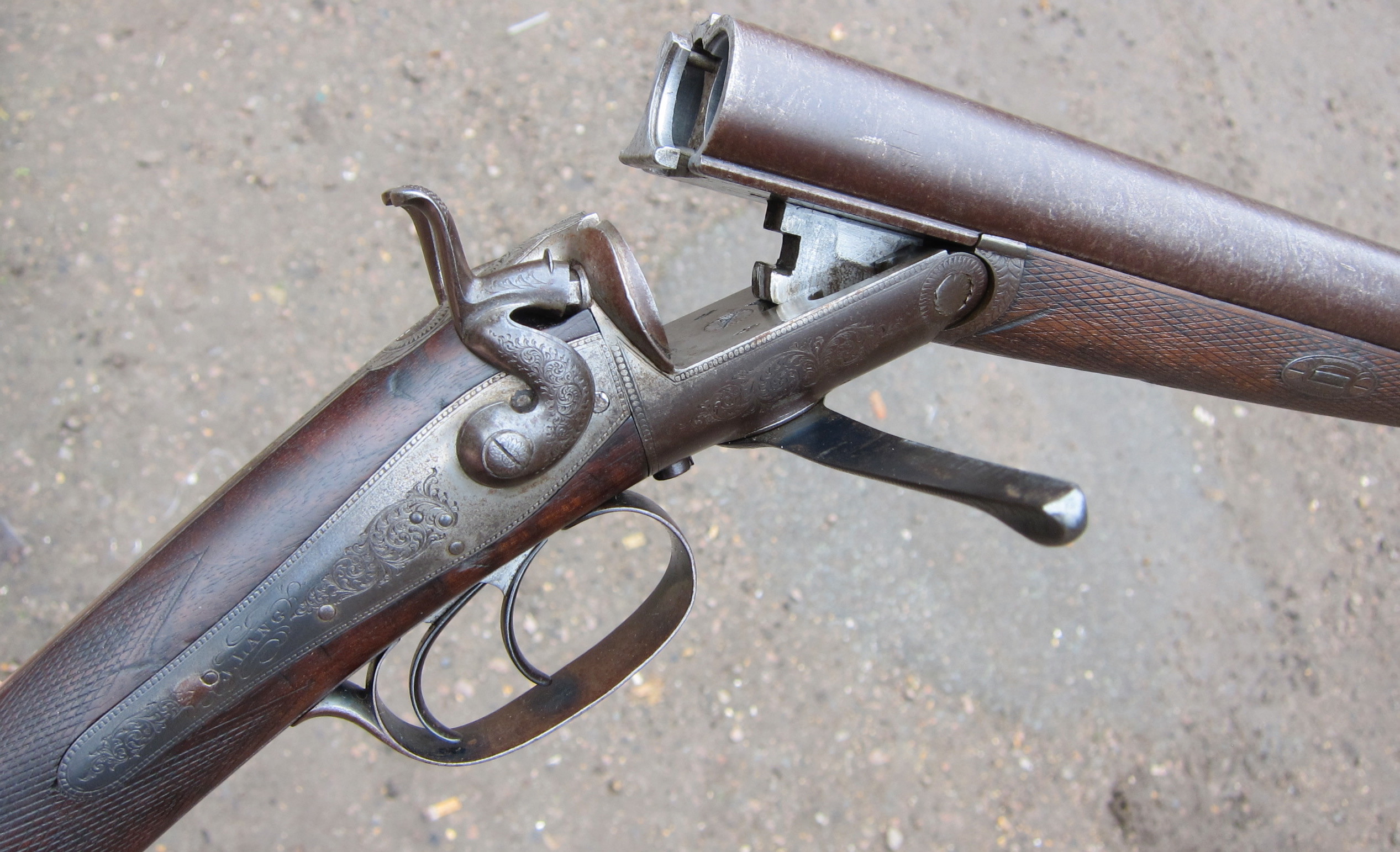
I had a partridge day lined up at Wattisham on 6th October, a perfect opportunity to give the old girl a dance. I may not cover myself in glory but there would be plenty of birds for me to miss if necessary and certainly enough for me not to worry too much about the glacial slowness of the loading cycle. Actually, I may be pre-judging unfairly here. I normally shoot with a Jones under-lever hammer gun. The forward-facing lever, in theory, should be no slower to operate, though the non-rebounding locks do slow things down a little.
One other interesting feature: under the barrel flats is carefully engraved script reading 'Proved and finished by' but no name to explain the craftsmen concerned following this text. Just one more historical anomaly to keep today's collectors scratching their heads!
Shooting Impressions:
The Lang felt good in my hands as the light rain drizzled and the first partridges of the first drive took to the air. Standing on Peg 1, I swung on a crosser breaking to my right, pushed on the lead and the familiar crump of black powder was followed by a ball of feathers heading for the turf. My first shot with the old gun, doubtless its first shot in decades was a winner. I knew we were going to get on.
By the end of the day we had accounted for more than our share of the 140 birds and i can safely declare the gun a great handler; beautifully balanced with crisp trigger pulls and no felt recoil. The loading cycle was perfectly fast enough and the lever easy and instinctive to work on a hot peg. I have a new best friend!

Published by Vintage Guns Ltd on




